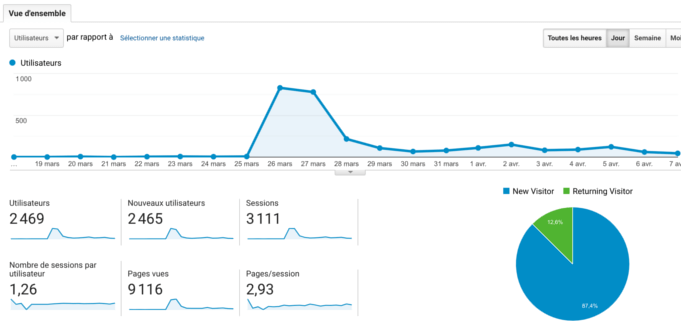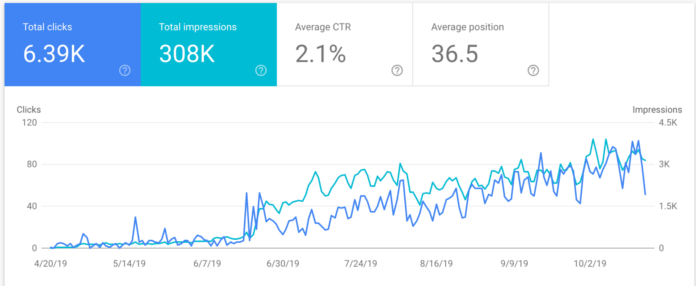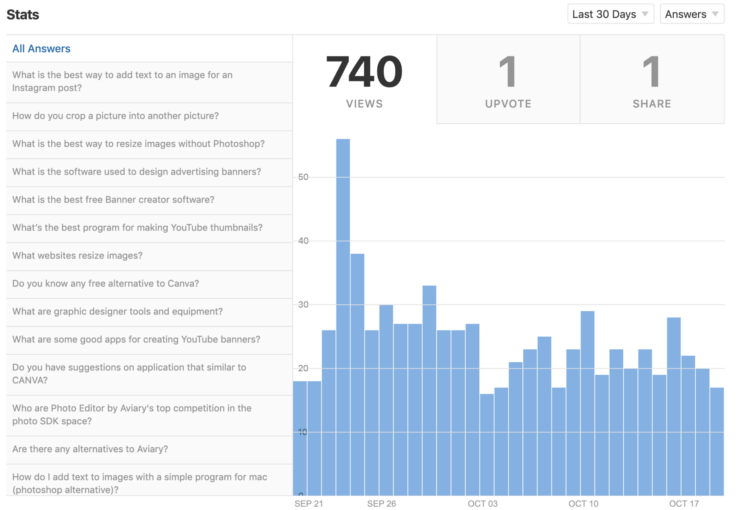![]()
Launching and growing a business has never been an easy task for anybody, we all have our strengths and our weaknesses. Discover how I went from zero to more than 40 paid customers without sales or marketing skills.
I personally have a technical background, therefore, marketing and sales are not skills I have learned during my career or even at school. (For the record, I started as a software engineer, then became a software architect before becoming a CTO.)
To give you a bit of context, I started Pixelixe.com as a side project and launched it at the end of March this year (2019). For those of you who never heard of it, Pixelixe offers a free or paid (monthly fee $5.99 = Saas model ) graphic editor tool. I built it to be one of the easiest ways online to create graphics for social media and marketing purposes (but nothing new there, I am fully aware I have a lot of competitors. But I always believed there was enough space for everybody).
I worked on this project during my free time (weekends, evenings, holidays) for approximately 12 months, from April 2018 to March 2019. I spent literally zero dollars on marketing. Even better, the overall project cost equals only $13 (domain name from Google Domains). Also, keep in mind I am a solo-preneur, and I have to do everything by myself (design, bug fixes, coding, business model iterations, communication, SEO, and so on)
If you would like to know more about how I decided to start my own business as a side project and how I choose a startup idea and built it, I strongly encourage you to read my previous blog post where I explain: How a facebook rejection motivated me to start my own project.
I received a lot of DMs with questions regarding this previous article, therefore I decided to help explain how I successfully got my first paying customer and made it to more than 40 in a few months with no budget and growing from zero visitors to 3000 each month.
Product launch prerequisites
When I say it took six months, I mean six months since the day I launched the product for the first time (It was April, 25th).
Prior to this launch day, I made sure the first version of my product was ready to launch. This includes having the subscription mechanism and authentication up and running (billing was and is still possible directly using a credit card via Stripe) and I had the website ready to welcome potential visitors.
I strongly recommend launching your product with a working billing system on your website. Otherwise, you will get traffic and first users but you won’t be able to validate your business model and make sure you are actually solving a problem for your potential users.
To trigger sales, you need to attract visitors to your website.
As much as a retail store must get visitors to start selling, you need to attract targeted visitors in your digital store (your website) to trigger your first sales.
How painful it is, to work hard during months on a product, launch it and have zero visitors as a result.
As you may already know, you won’t get any paying customers if you are unable to attract visitors to your website. So, the key here is to identify the best ways for your product or services to get targeted traffic on your website.
Keep in mind that techniques I will describe below may or may not work for you, your product won’t be in the same market than mine, therefore, you must diversify your approaches and adapt accordingly.
To be honest, I think one of the keys here is to be and remain patient and be fully aware that you will start with almost zero daily visitors at first.
If like me, you don’t want to spend money on Instagram ads or Facebook ads, you have to find ways to get visitors by yourself. There are a lot of effective ways to do so but they all required work and then patience. Too few techniques guarantee direct ROI aka instant traffic incoming to your website (except maybe a Product Hunt launch ..).
Launch your product on ProductHunt
The first thing I did was launching my product on ProductHunt :
https://www.producthunt.com/posts/pixelixe
ProductHunt showcase products every day, some of them are featured on their home page and receives a huge amount of traffic (not always qualified though) but some of them don’t. But I definitely recommend trying anyway as it does not require so many preparations. I won’t describe in detail how to prepare for ProductHunt because there is already a gazillion of articles about this topic available (google it). It just helps to boost your launch quite efficiently.
For me, it helped me to remain motivated, it is so damn reassuring and motivating when you start seeing actual people/ « human being » testing your « baby » / « product » for the first time and you start receiving first comments.
Thanks to ProductHunt, I had approximately 2500 visitors (as you can see below) with 155 upvotes.

But as you can see traffic spike won’t last, after a couple of days, traffic from ProductHunt will start decreasing slowly and surely.
By the way, I had my first paying customer from ProductHunt, the second day after the launch to be exact. What a moment, I was so excited and proud of myself. It is an incredible milestone for entrepreneurs even if it was only a few bucks. I won’t forget the feeling of freedom I had at this point.
Finally, a couple of tech bloggers discovered the product on ProductHunt and wrote articles about it which gave pixelixe.com a first real SEO boost thanks to backlinks.
Register to startup directories to get first backlinks
The second easy step to attract visitors to pixelixe.com was by getting “free” backlinks. As you may know, to better rank a website on search engines such as Google, you basically need 3 things, « backlinks », « backlinks » and « backlinks ».
The more “http” direct links from other websites to yours exist, the more your website will rank on search engines. You need to have hundreds of backlinks pointing towards your website directly to start noticing a difference. The more you have backlinks, the more search engines will trust your website and will consider it to be an authority around topics you will cover.
Backlinks are not all equivalent. Some are better than others, just keep in mind that it is better to have backlinks from a website that have authority in their domains (and obviously, more backlinks than your own site).
There is a lot of Startup directories out there available :
G2.com, StartupRanking, Indie Hackers, crunchbase.com, index.com, LaunchingNext, BetaList, Betafy.com …
Yes, it takes time to register your site into all those directories but, trust me, it will boost your Google Search ranking after a few months (4 months approximately).
Create SEO landing pages with niched keywords
SEO can seem scary for beginners. How to get started? What are the key principles? Where to learn quickly basic SEO techniques?
To be honest, I still consider myself as an SEO beginner. Still, I applied one technique and it worked quite well. And, this is so basic I am pretty sure it will work for you as well :
I asked myself what keywords/features would my audience search on Google ?
And I am not talking about keywords defining the product directly but more product’s sub-features. For Pixelixe, keywords won’t be “graphic editor tool” but rather :
« Add text to photo » or « add quote to images », « crop image online », « resize an image online ».
Those are keywords examples that a lot of people browse every day and worked perfectly well for Pixelixe.
Once identified, the trick is to create landing pages dedicated to each keywords to make sure that they will rank for those keywords.
Ex :
https://pixelixe.com/add-quote-to-picture.html
https://pixelixe.com/crop-image.html
https://pixelixe.com/create-instagram-photo.html
You can notice, that I directly used those keywords in the landing page URI, then the content itself is dedicated to this topic (of course).
Once again, it takes time to write and emphasize content but it is definitely worth it. A few months after their creation, I saw positive results in Google Search Console.
You can see below the best keywords with the number of clicks and impressions of pages from my webpage on Google Search for last month. Those screenshots are from Google Search Console, a free tool provided by Google to monitor your SEO ( https://search.google.com ).
![]()
And the boost of SEO progressing over time :

Answer questions related to your niche on Quora
Another 100% free technique that still requires effort and time to set up is to answer Quora questions where your website and product will be the answer.
For example, for Pixelixe, I answered around 60 questions where the question was « What are alternatives to Photoshop for beginners ? » or « What are alternatives to Canva » or « How to crop photos online ? » or « How to create ad banners ».
The best advantage of Quora is that you will have instant results. As soon as, your answers are posted, Quora visitors can potentially click on your links and visit your website. You should get a few visits by day quite quickly.

Create partnerships and offer promo deals
Another thing I tried was selling lifetime deals on Saas product marketplaces (resellers/distributors).
Basically, partners offer to promote your product with an exclusive deal (% off on your product) and sell it for you on their marketplace. As you may imagine, those “Lifetime deals” must be as cheap as possible to trigger sales (around 10% of the real value of your product) and keep in mind that after this huge cut on your price tag, resellers will pay themselves with a percentage of each sale (generally 50%).
Here are the pros and cons. The main pro is that you should get a lot of sales and therefore earn money really fast with marketplaces that already have a lot of targeted traffics. The main cons is that you will devalue your product and, therefore, earn a lot less than if you were selling directly to those customers.
Still, I do think it remains a good technique when you start.
I think that when you launch your product, you need motivation. Having a bit of income allows remaining motivated and excited. Moreover, if it triggers sales, that means that people are definitely interested in your product. If on the contrary, you end up having zero sales with those kinds of partnerships, maybe that means you should pivot. Market validation is KEY when you launch.
I successfully partnered with Webmaster-deals.com, DealFuel.com and Bypeople.com.
Of course, the rolls Royce of online deals marketplace is AppSumo but good luck to be featured.
Finally, blog posts can strongly improve your SEO as well
You can write diverse blog posts related to new features, such as :
https://pixelixe.com/blog/how-to-create-a-linkedIn-image-post-with-perfect-size-and-dimensions/
Or
https://pixelixe.com/blog/how-to-create-a-Facebook-cover-with-perfect-size-and-dimensions/
My favorite blog post format is definitely telling the story of Pixelixe. This side-project has been an adventure for me and I take a lot of pleasure sharing it with readers. Here is an example of a blog post, I wrote for Pixelixe’s blog and that I reposted on Hackernoon :
Original link :
Reposted link :
People are always interested in stories. In those “story” blog posts, I tried to be as honest as possible and to bring value to readers. Do the same and then don’t forget to promote your blog post to make sure it will rank as much as possible on Search engines.
You can submit your blog post on Hacker News, Reddit, Social Media, Indie Hackers, and Medium for example as a start. Once again, this technique will take time, it won’t explode overnight but you won’t regret it after a couple of months.
![]()
Conclusion
There are a few techniques that I tried but didn’t work out. For example, posting on Reddit or Hacker News generated a lot of traffic but no sales. Try them anyway, it might work for you. Marketing is not an exact science.
One last advice though, don’t quit. Be patient, even if you do not succeed quickly does not mean you won’t learn in the process. Keep trying and pushing and it will definitely pay off.
I will soon write about the technical frameworks and infrastructures I used to develop pixelixe.com . Stay tuned..